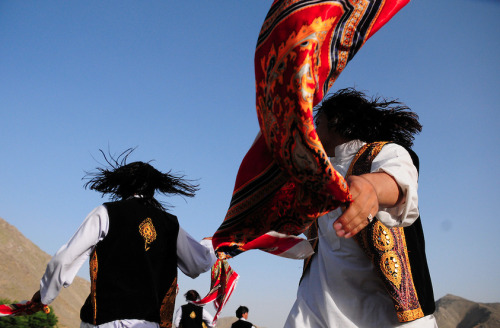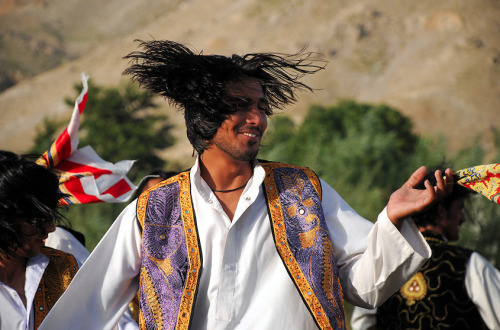Attan is a traditional Afghan dance; It’s origin lies in the Afghan Pashtoon tribes pagan yest
Attan is a traditional Afghan dance; It’s origin lies in the Afghan Pashtoon tribes pagan yester-years and usually involved men performing a ritual dance. This was later modified into a Muslim dance of soldiers to allow the dancers to get ‘closer to God’ before they advanced on their missions. It was noted by the Moghuls of the period and is unique only amongst Afghans living in and around southern borders of Afghanistan.It is performed usually with a Dhol, which is a double-headed barrel drum that has a very deep and low resonance sound. Other instruments can include a single barreled Dhol, Tablas, the 18-stringed Robab, Surnai flute (aka shanai-India, zurna - Central Asia and Turkey, and zurla Macedonia), or wooden flute known as a Toola. The technique behind the Attan has changed much for over centuries, but its base has not changed. Its a circular dance ranging from two to over a hundred people, and the performers will follow each other going round and round in a circle to the beat as the rhythm and beats faster.More complex Attans involve an Attan troup leader who begins the attan slowly using a variation of styles and techniques, and the ultimate spin is performed after the leader gives the signal, either by placing his hand on the floor or raising it in the air. The musicians perform the music at the technique of the leader and is fully dependent on the attan leader for guidance. The dance can be anywhere from 5 minute to 30 minutes long. The attan will end when no dancer is left standing on the dance floor. There are many different kinds of Attan in Afghanistan, Kabuli, Wardaki, Logari, Khosti/Paktia, Herati, Kochyano, Khattak, Pashayi (played with Surnai flute), and Nuristani. (source) -- source link
Tumblr Blog : afghanistaninphotos.tumblr.com
#afghanistan#afghan#pathan#pashtun




